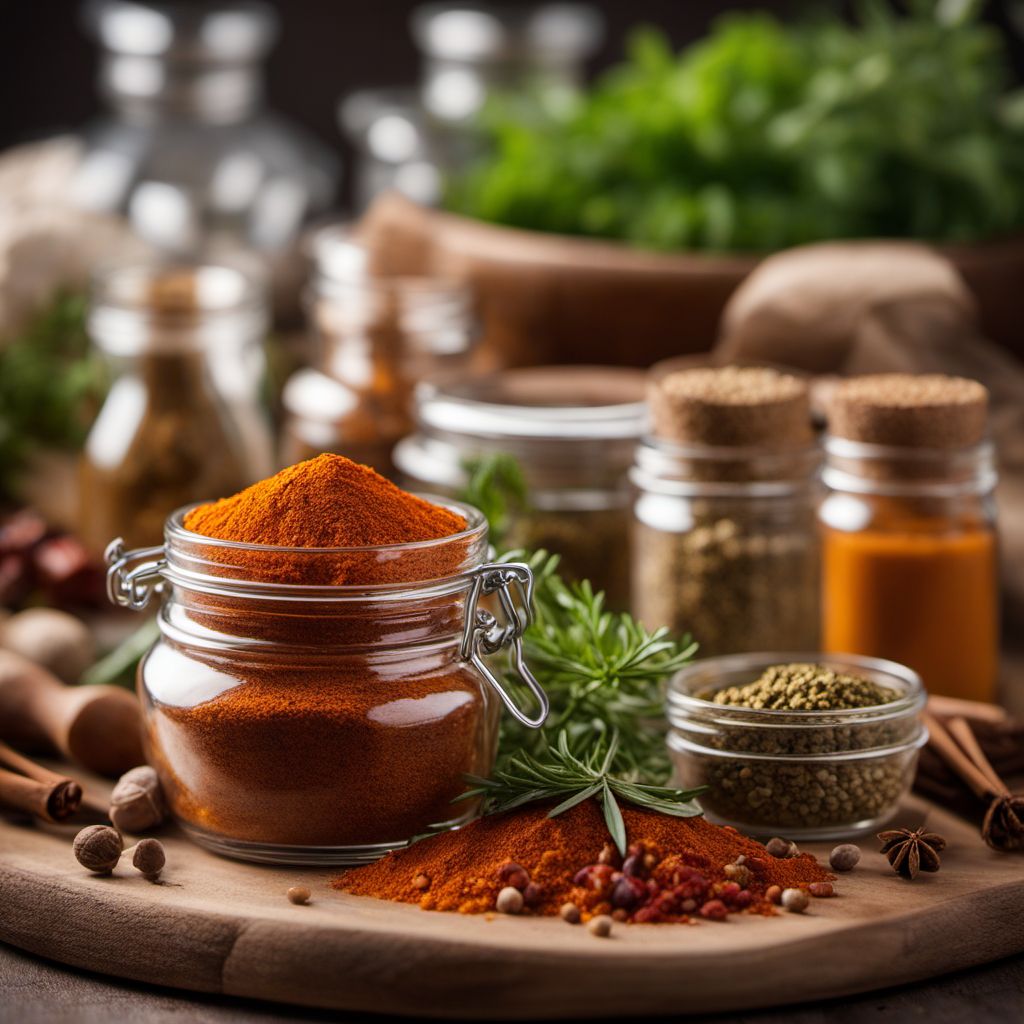
Ingredient
Processed or preserved herbs, spices and similar
Preserved Flavor Boosters
Processed or preserved herbs, spices, and similar ingredients are carefully selected and processed to retain their natural flavors and aromas. These ingredients are often dried, ground, or preserved in various forms such as powders, pastes, or oils. They provide a convenient way to add depth and complexity to dishes, especially when fresh alternatives are not readily available. Processed or preserved herbs, spices, and similar ingredients are commonly used in marinades, sauces, soups, and stews to enhance the overall taste profile.
Origins and history
The use of herbs and spices in cooking dates back thousands of years, with ancient civilizations like the Egyptians, Greeks, and Romans valuing these ingredients for their medicinal and culinary properties. Over time, different preservation techniques were developed to ensure the availability of herbs and spices beyond their growing seasons. Today, processed or preserved herbs, spices, and similar ingredients are widely used in cuisines around the world, adding distinct flavors and aromas to a variety of dishes.
Nutritional information
Processed or preserved herbs, spices, and similar ingredients offer a concentrated burst of flavor while providing minimal calories and fat. They are also rich in antioxidants and other beneficial compounds that contribute to overall health and well-being. However, it is important to check the labels of processed or preserved products for any added sugars, sodium, or artificial additives that may affect their nutritional value.
Allergens
Processed or preserved herbs, spices, and similar ingredients may contain allergens such as gluten, soy, or nuts, depending on the specific product and manufacturing processes. It is crucial to read the ingredient labels carefully and consult with a healthcare professional if you have any known allergies or sensitivities.
How to select
When selecting processed or preserved herbs, spices, and similar ingredients, opt for reputable brands that prioritize quality and freshness. Look for products that are free from artificial additives, preservatives, or excessive sodium. Check the packaging for any signs of damage or tampering, and ensure that the expiration date is within a reasonable timeframe.
Storage recommendations
To maintain the freshness and quality of processed or preserved herbs, spices, and similar ingredients, it is essential to store them in a cool, dry place away from direct sunlight. Properly sealed containers or airtight jars can help prevent moisture and air exposure, which can degrade the flavors and aromas over time. It is advisable to label the containers with the date of purchase or preparation to ensure their optimal usage within a reasonable timeframe.
How to produce
Producing processed or preserved herbs, spices, and similar ingredients at home can be a rewarding experience. Start by growing your own herbs or sourcing them from local farmers' markets. Once harvested, herbs can be dried or frozen for long-term storage. To preserve the flavors and aromas, consider making homemade spice blends or infusing oils with your favorite herbs and spices. There are numerous resources available online that provide step-by-step instructions for different preservation methods.
Preparation tips
Processed or preserved herbs, spices, and similar ingredients can be used in a variety of culinary applications. They are commonly added to marinades, rubs, and sauces to enhance the flavors of meats, poultry, or vegetables. These ingredients can also be used to season soups, stews, or stir-fries, providing an instant flavor boost. Additionally, they can be sprinkled over salads, roasted vegetables, or pasta dishes to add a final touch of aromatic goodness.
Availability
Processed or preserved herbs, spices, and similar ingredients are widely available in grocery stores, supermarkets, and specialty food stores worldwide. They can also be purchased online from various retailers that offer a wide range of options to suit different culinary preferences.
